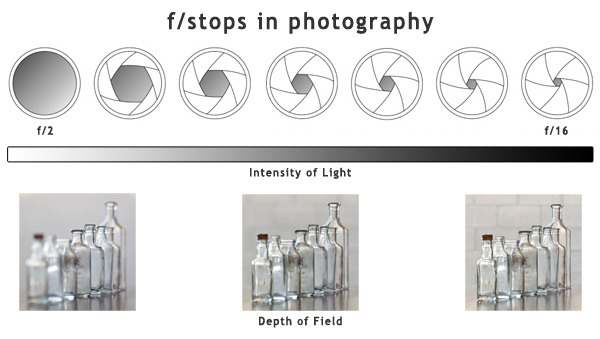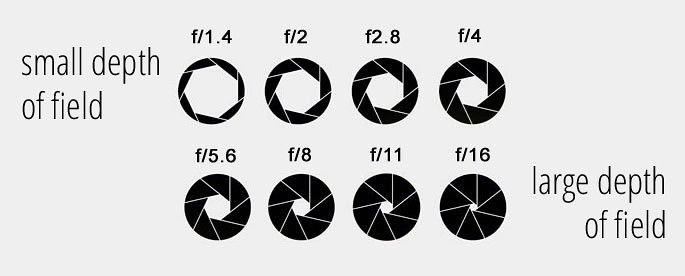

It’s useful to use a diagram in order to understand the behaviour of light when it enters a lens.

This is because the distance between you and the subject you are focusing upon affects how much of the scene in front of you is in focus. You may have noticed that when you focus your lens on the horizon, almost everything in the frame appears sharp.Įqually, if you focus on something that’s just in front of you, everything behind it goes blurry. The Distance Between You and Your Subject There are then two other factors that play a role in understanding depth of field: focal length and sensor size.

(Technically, it’s actually the entrance pupil of the lens which is something slightly different, but let’s worry about these finer details another time!) Two of these variables have a direct impact: the distance between you and your subject (‘subject distance’), and the aperture of your lens. There are four variables that affect the depth of field.
#Depth of field and f stop full
The full extent of this range is your depth of field.Īs will be discussed below, this depth of field can vary according to a number of variables such as how close you are to your subject, the size of your aperture, the focal length of the lens that you are using, and the size of the sensor in the camera which you are shooting on (although these last two quickly get complicated!). In addition to this, there will be a region in front of and behind the subject that is acceptably sharp. Everything that is the same distance away from your lens as your subject is now on the same focal plane.

If you imagine yourself focusing on your subject. “In focus” is a relative term and given how easily how parts of an image can slide from being sharp to being blurry, what you might class as being “in focus” might vary according to how you are viewing an image - i.e., how big it is being displayed, and how close you are to it.īecause of this, the depth of field can be thought of as being a range of acceptable focus. In photography, the term depth of field describes the region of a photograph that is in focus. So grab a copy of this f-stop chart, find out what a camera f-Stop is, and follow along to improve your photography by mastering DOF.
#Depth of field and f stop how to
This guide will help you to understand how to achieve both of these results, but more importantly, give you a solid foundation for how to use depth of field in every aspect of your photography.Īll of the common questions about depth of field asked by photographers will be addressed and although this can be a highly complex subject, we’ll aim to make it as digestible as possible. Or do you want to make your image feel more cinematic, isolating your subject by making it stand out against a blurry background? Depth of field is one of the fundamental aspects that every photographer should understand as it has such a large bearing on your images.ĭepth of field determines how much of your image is sharp, giving you control - whether for creative or practical reasons - over which elements are in focus.ĭo you want to ensure that all of your photograph is crisp, from the foreground to the background, to ensure that there are no blurry parts that distract the viewer?


 0 kommentar(er)
0 kommentar(er)
